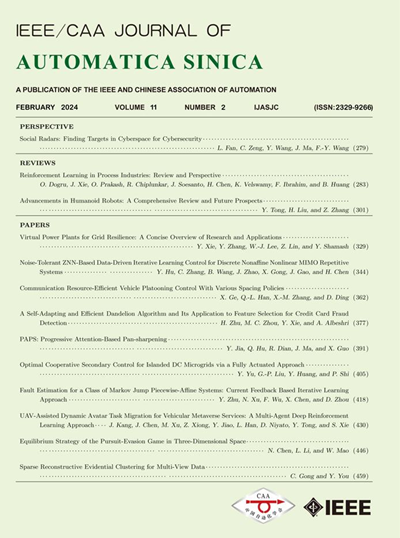基于混合核函数的RVM在GNSS抗欺骗领域的应用
IF 19.2
1区 计算机科学
Q1 AUTOMATION & CONTROL SYSTEMS
引用次数: 0
摘要
随着全球卫星导航系统(GNSS)的广泛应用,欺骗攻击对GNSS的安全性和可靠性构成了威胁。设计有效的GNSS欺骗检测技术对于保证GNSS系统应用对接收机用户的安全性和可靠性具有重要意义。传统的欺骗检测技术一般只通过监测接收方中一个或两个数据信息的特征变化来判断是否发生欺骗攻击。然而,一些欺骗模式可以巧妙地使被监控的数据与真实数据非常接近,从而避开了这些检测方法,容易使其失效。提出了一种基于混合核相关向量机(RVM)的GNSS欺骗干扰检测方法。改进的信号质量监测(SQM)运动方差、载波噪声比运动方差、伪距离多普勒一致性、伪距残差、多普勒频率、时钟偏移和时钟漂移作为检测特征。该技术可以检测GNSS欺骗信号,有效提高GNSS系统的安全性和可靠性。实验结果表明,该技术具有较高的检测精度和抗干扰能力,能够有效应对各种形式的欺骗攻击。本文章由计算机程序翻译,如有差异,请以英文原文为准。
The Application of RVM in GNSS Anti-Spoofing Field Based on the Hybrid Kernel Function
With the widespread application of global navigation satellite system (GNSS), spoofing attacks pose a threat to the security and reliability of GNSS. It is of great significance to design effective GNSS spoofing detection technology to ensure the security and reliability of GNSS system applications for receiver users. Traditional spoofing detection techniques generally only determine whether a spoofing attack has occurred by monitoring the feature changes of one or two data information in the receiver. However, some spoofing modes can cleverly make the monitored data very close to the real data, thus avoiding these detection methods and easily making them ineffective. In this study, a GNSS spoofing jamming detection method based on hybrid kernel relevance vector machine (RVM) is proposed. The improved signal quality monitoring (SQM) movement variance, carrier noise ratio movement variance, pseudo range Doppler consistency, pseudorange residual, Doppler frequency, clock offset and clock drift are used as detection characteristics. This technology can detect GNSS spoofing signals, effectively improving the safety and reliability of GNSS systems. The experimental results show that this technology has high detection accuracy and anti-interference ability and can effectively respond to various forms of spoofing attacks.
求助全文
通过发布文献求助,成功后即可免费获取论文全文。
去求助
来源期刊

Ieee-Caa Journal of Automatica Sinica
Engineering-Control and Systems Engineering
CiteScore
23.50
自引率
11.00%
发文量
880
期刊介绍:
The IEEE/CAA Journal of Automatica Sinica is a reputable journal that publishes high-quality papers in English on original theoretical/experimental research and development in the field of automation. The journal covers a wide range of topics including automatic control, artificial intelligence and intelligent control, systems theory and engineering, pattern recognition and intelligent systems, automation engineering and applications, information processing and information systems, network-based automation, robotics, sensing and measurement, and navigation, guidance, and control.
Additionally, the journal is abstracted/indexed in several prominent databases including SCIE (Science Citation Index Expanded), EI (Engineering Index), Inspec, Scopus, SCImago, DBLP, CNKI (China National Knowledge Infrastructure), CSCD (Chinese Science Citation Database), and IEEE Xplore.
 求助内容:
求助内容: 应助结果提醒方式:
应助结果提醒方式:


